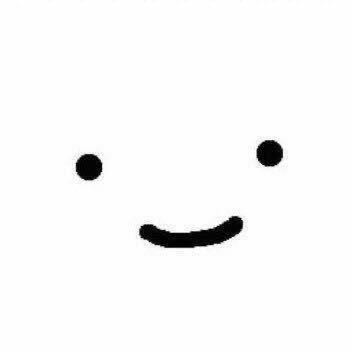import random
import os
import time
import shutil
import math
import cv2
import cv2
import matplotlib.pyplot as plt
# 图片扭曲
from PIL import Image, ImageFilter
from PIL import Image, ImageFilter, ImageEnhance,ImageDraw, ImageFont, ImageFilter
from uuid import uuid4
from ultralytics import YOLO
def load_characters_from_file(char_file):
"""从文本文件加载字符集"""
if not os.path.exists(char_file):
raise ValueError(f"字符文件不存在: {char_file}")
with open(char_file, "r", encoding="utf-8") as f:
# 读取文件内容并去除空格和换行符
content = f.read().replace(" ", "").replace("\n", "")
# 确保字符集不重复
characters = list(set(content))
# 添加大小写字母和数字
digits = [str(i) for i in range(10)]
letters = [chr(i) for i in range(65, 91)] # 大写字母 A-Z
letters += [chr(i) for i in range(97, 123)] # 小写字母 a-z
_all_chars = characters + digits + letters
return _all_chars
all_chars = load_characters_from_file("common_chars.txt")
# 创建字符到类别的映射
char_to_class = {char: i for i, char in enumerate(sorted(set(all_chars)))}
def apply_diverse_distortion(img, size):
"""
应用多样化的图像扭曲,同时确保文字清晰可识别
参数:
img: 输入的PIL图像对象
size: 图像尺寸元组 (width, height)
返回:
扭曲后的PIL图像
"""
# 增强文字对比度,提高识别率
enhancer = ImageEnhance.Contrast(img)
img = enhancer.enhance(1.5) # 增加对比度
# 随机选择一种扭曲类型(减少极端扭曲的概率)
distortion_type = random.choices(
["perspective", "shear", "noise"],
weights=[3, 3, 3], # 透视和波浪更常见,其他较少
)[0]
if distortion_type == "perspective":
# 透视扭曲 - 保持轻微的水平和垂直变换
params = [
1 - float(random.randint(1, 3)) / 300, # 水平缩放
float(random.randint(-2, 2)) / 300, # 水平剪切
float(random.randint(-1, 1)) / 300, # 垂直剪切
float(random.randint(-1, 1)) / 300, # 水平倾斜
1 - float(random.randint(1, 3)) / 300, # 垂直缩放
float(random.randint(1, 2)) / 2000, # 水平透视
0.0003, # 扭曲强度
float(random.randint(1, 2)) / 2000, # 垂直透视
]
img = img.transform(size, Image.PERSPECTIVE, params, resample=Image.BICUBIC)
elif distortion_type == "wave":
# 波浪扭曲 - 轻微的水平波浪,确保文字不会重叠
wave_amplitude = random.randint(1, 2) # 更小的振幅
wave_frequency = random.uniform(0.01, 0.02) # 更低的频率
mesh = []
grid_size = 15 # 更大的网格,减少局部变形
for x in range(0, size[0], grid_size):
for y in range(0, size[1], grid_size):
box = (x, y, x + grid_size, y + grid_size)
x0, y0 = x, y
x1, y1 = x + grid_size, y
x2, y2 = x + grid_size, y + grid_size
x3, y3 = x, y + grid_size
# 只在水平方向应用波浪变形
x0 += wave_amplitude * math.sin(y0 * wave_frequency)
x1 += wave_amplitude * math.sin(y1 * wave_frequency)
x2 += wave_amplitude * math.sin(y2 * wave_frequency)
x3 += wave_amplitude * math.sin(y3 * wave_frequency)
quad = (x0, y0, x1, y1, x2, y2, x3, y3)
mesh.append((box, quad))
img = img.transform(size, Image.MESH, mesh, resample=Image.BICUBIC)
elif distortion_type == "shear":
# 剪切扭曲 - 非常轻微的水平剪切
shear_factor = random.uniform(-0.02, 0.05) # 更小的剪切因子
img = img.transform(
size, Image.AFFINE, (1, shear_factor, 0, 0, 1, 0), resample=Image.BICUBIC
)
elif distortion_type == "light_bend":
# 轻微弯曲 - 模拟纸张弯曲效果
cx, cy = size[0] // 2, size[1] // 2
radius = min(size) * random.uniform(0.5, 0.7)
magnitude = random.uniform(0.005, 0.01) # 更小的变形强度
mesh = []
grid_size = 15
for x in range(0, size[0], grid_size):
for y in range(0, size[1], grid_size):
box = (x, y, x + grid_size, y + grid_size)
x0, y0 = x, y
x1, y1 = x + grid_size, y
x2, y2 = x + grid_size, y + grid_size
x3, y3 = x, y + grid_size
def bend_point(px, py):
dx = (px - cx) / radius
dy = (py - cy) / radius
distance_sq = dx * dx + dy * dy
if distance_sq < 1:
# 基于距离中心的位置计算变形
factor = 1 + magnitude * (1 - distance_sq)
nx = cx + (px - cx) * factor
ny = cy + (py - cy) * factor
return (nx, ny)
return (px, py)
x0, y0 = bend_point(x0, y0)
x1, y1 = bend_point(x1, y1)
x2, y2 = bend_point(x2, y2)
x3, y3 = bend_point(x3, y3)
quad = (x0, y0, x1, y1, x2, y2, x3, y3)
mesh.append((box, quad))
img = img.transform(size, Image.MESH, mesh, resample=Image.BICUBIC)
elif distortion_type == "noise":
# 添加噪点和模糊,模拟打印/扫描效果
img = img.filter(ImageFilter.GaussianBlur(radius=random.uniform(0.2, 0.5)))
# 随机添加噪点
if random.random() > 0.5:
pixels = img.load()
width, height = img.size
for i in range(width):
for j in range(height):
if random.random() < 0.05: # 1%的像素被修改
pixels[i, j] = (
(0, 0, 0) if random.random() < 0.5 else (255, 255, 255)
)
# 最后增强一次对比度,确保文字清晰
enhancer = ImageEnhance.Contrast(img)
img = enhancer.enhance(1.2)
return img
def create_validate_code(fg_color,chars=all_chars,size=(200, 70),mode="RGB",bg_color=(255, 255, 255),font_size=20,font_type="./MSYH.TTC",length=random.randint(2, 4),draw_lines=True,n_line=(1, 2),draw_points=True,point_chance=1):
"""
生成验证码图片并返回字符坐标信息
@return: [0]: PIL Image实例
@return: [1]: 验证码图片中的字符串
@return: [2]: 每个字符的边界框信息(YOLO格式)
"""
width, height = size # 宽高
# 创建图形
img = Image.new(mode, size, bg_color)
draw = ImageDraw.Draw(img) # 创建画笔
def get_chars():
"""生成给定长度的字符串,返回列表格式"""
return random.sample(chars, length)
def create_lines():
"""绘制干扰线"""
line_num = random.randint(*n_line) # 干扰线条数
for i in range(line_num):
# 起始点
begin = (random.randint(0, size[0]), random.randint(0, size[1]))
# 结束点
end = (random.randint(0, size[0]), random.randint(0, size[1]))
draw.line([begin, end], fill=(0, 0, 0))
def create_points():
"""绘制干扰点"""
chance = min(100, max(0, int(point_chance))) # 大小限制在[0, 100]
for w in range(width):
for h in range(height):
tmp = random.randint(0, 100)
if tmp > 100 - chance:
draw.point((w, h), fill=(0, 0, 0))
def create_strs():
"""绘制验证码字符并获取每个字符的坐标"""
c_chars = get_chars()
strs = " %s " % " ".join(c_chars) # 每个字符前后以空格隔开
char_coordinates = [] # 存储每个字符的坐标信息
font = ImageFont.truetype(font_type, font_size)
# 使用getbbox获取字符串的边界框
bbox = font.getbbox(strs)
font_width = bbox[2] - bbox[0] # 右边界减去左边界
font_height = bbox[3] - bbox[1] # 下边界减去上边界
# 应用原有的缩放因子
font_width /= 0.7
font_height /= 0.7
# 计算字符串绘制起始位置
start_x = (width - font_width) / 3
start_y = (height - font_height) / 3
# 绘制字符串并记录每个字符的位置
current_x = start_x
for char in strs:
if char == " ": # 跳过空格
current_x += font_width / len(strs)
continue
# 获取当前字符的边界框
char_bbox = font.getbbox(char)
char_width = char_bbox[2] - char_bbox[0]
# 计算字符在画布上的实际边界框
actual_bbox = (
current_x,
start_y,
current_x + char_width,
start_y + font_height,
)
# 转换为YOLO格式
x_center = (actual_bbox[0] + actual_bbox[2]) / 2 / width
y_center = (actual_bbox[1] + actual_bbox[3]) / 2 / height
box_width = (actual_bbox[2] - actual_bbox[0]) / width
box_height = (actual_bbox[3] - actual_bbox[1]) / height
# 获取字符类别
class_id = char_to_class.get(char, 0) # 默认类别0
char_coordinates.append(
{
"char": char,
"class_id": class_id,
"bbox": (x_center, y_center, box_width, box_height),
}
)
draw.text((current_x, start_y), char, font=font, fill=fg_color)
current_x += char_width # 更新下一个字符的起始位置
return "".join(c_chars), char_coordinates
if draw_lines:
create_lines()
if draw_points:
create_points()
strs, char_info = create_strs()
# 图形扭曲参数
# params = [1 - float(random.randint(1, 2)) / 80,
# 0,
# 0,
# 0,
# 1 - float(random.randint(1, 10)) / 80,
# float(random.randint(3, 5)) / 450,
# 0.001,
# float(random.randint(3, 5)) / 450
# ]
# img = img.transform(size, Image.PERSPECTIVE, params) # 创建扭曲
# 轻微透视扭曲参数(保持文字可读性)
# params = [
# 1 - float(random.randint(1, 3)) / 150, # 水平缩放:减小范围至1-3/150
# float(random.randint(-2, 2)) / 200, # 水平剪切:增加微小随机偏移
# 0, # 垂直剪切保持0
# 0, # 水平倾斜保持0
# 1 - float(random.randint(1, 3)) / 150, # 垂直缩放:减小范围至1-3/150
# float(random.randint(1, 2)) / 1000, # 水平透视:减小至1-2/1000
# 0.0005, # 扭曲强度:降低至0.0005
# float(random.randint(1, 2)) / 1000, # 垂直透视:减小至1-2/1000
# ]
# # 应用透视变换并保持高质量
# img = img.transform(size, Image.PERSPECTIVE, params, resample=Image.BICUBIC)
# img = apply_diverse_distortion(img, size)
return img, strs, char_info
def create_yolo_dataset(num_images, output_dir="./chinese_dataset", train_ratio=0.8):
"""
创建YOLO格式的数据集
"""
# 创建目录结构
train_images_dir = os.path.join(output_dir, "images", "train")
train_labels_dir = os.path.join(output_dir, "labels", "train")
val_images_dir = os.path.join(output_dir, "images", "val")
val_labels_dir = os.path.join(output_dir, "labels", "val")
for dir_path in [
train_images_dir,
train_labels_dir,
val_images_dir,
val_labels_dir,
]:
os.makedirs(dir_path, exist_ok=True)
# 生成数据集
for i in range(num_images):
# 确定是训练集还是验证集
is_train = random.random() < train_ratio
img_dir = train_images_dir if is_train else val_images_dir
label_dir = train_labels_dir if is_train else val_labels_dir
# 生成验证码
res = create_validate_code(
(random.randint(0, 255), random.randint(0, 255), random.randint(0, 255)),
chars=all_chars,
)
img, text, char_info = res
_t = uuid4().hex.lower()
# 保存图片
img_path = os.path.join(img_dir, f"{_t}_{int(time.time())}_{i}.png")
img.save(img_path)
# 保存标签文件
label_path = os.path.join(label_dir, f"{_t}_{int(time.time())}_{i}.txt")
with open(label_path, "w", encoding="utf-8") as f:
for char_data in char_info:
class_id = char_data["class_id"]
x, y, w, h = char_data["bbox"]
f.write(f"{class_id} {x:.6f} {y:.6f} {w:.6f} {h:.6f}\n")
if (i + 1) % 100 == 0:
print(f"已生成 {i + 1}/{num_images} 张图片")
# 创建数据配置文件
with open(os.path.join(output_dir, "dataset.yaml"), "w") as f:
f.write(f"""train: ./images/train
val: ./images/val
nc: {len(char_to_class)}
names: {list(char_to_class.keys())}
""")
print(f"数据集生成完成,共生成 {num_images} 张图片")
print(f"训练集: {len(os.listdir(train_images_dir))} 张")
print(f"验证集: {len(os.listdir(val_images_dir))} 张")
print(f"数据集保存在: {os.path.abspath(output_dir)}")
def train(data_dir, epochs=100):
model = YOLO()
# 训练模型
model.train(
data=f"{data_dir}/dataset.yaml",
epochs=epochs, # 训练轮次
imgsz=200, # 输入图像尺寸
batch=8, # 批次大小
lr0=0.001, # 初始学习率
augment=True, # 数据增强
val=True, # 训练期间验证
project="ocr", # 项目名称
name="L1", # 实验名称
device="0", # 使用 GPU
)
# print(results)
# 在测试集上评估模型
metrics = model.val()
print(f"mAP@0.5: {metrics.box.map50}")
print(f"mAP@0.5:0.95: {metrics.box.map}")
# 指定自定义保存路径
custom_save_path = "./best_model.pt"
model.export(format="pt", save_dir=custom_save_path)
# 导出为ONNX
# model.export(
# format='onnx',
# imgsz=[640, 640], # 输入尺寸,需与训练一致或调整为部署需要
# half=False, # 是否FP16量化
# dynamic=True, # 动态批处理,适用于批量推理
# simplify=True, # 简化ONNX模型
# opset=12 # ONNX算子集版本,根据部署环境选择
# )
# 推理
# 批量推理文件夹中的所有图像
# results = model.predict(
# source=r"E:\train_mo\chinese\test_image",
# save=True,
# save_txt=True, # 保存预测框坐标到txt文件
# conf=0.4,
# project="yolov8_text",
# name="batch_inference",
# )
# # 显示推理结果
# for r in results:
# im_array = r.plot() # 绘制预测结果
# plt.imshow(im_array)
# plt.show()
def detect_text(image_path, model_path="yolov8_text/exp1/weights/best.pt"):
# 加载模型
model = YOLO(model_path)
# 运行推理
results = model(image_path, conf=0.4, iou=0.5)
# 显示结果
for r in results:
im_array = r.plot() # 绘制边界框和标签
im_array = cv2.cvtColor(im_array, cv2.COLOR_BGR2RGB) # 转换颜色空间
# 显示图像
plt.figure(figsize=(10, 10))
plt.imshow(im_array)
plt.axis('off')
plt.show()
# 打印检测结果
boxes = r.boxes
for box in boxes:
cls = int(box.cls)
conf = float(box.conf)
xyxy = box.xyxy[0].tolist()
print(f"类别: {model.names[cls]}, 置信度: {conf:.2f}, 坐标: {xyxy}")
return results
# 使用示例
if __name__ == "__main__":
dataset = "chinese_dataset"
create_yolo_dataset(50000,output_dir=dataset)
train(dataset,epochs=200)
# trained_model, onnx_path = train_yolov11(dataset,epochs=100)
# onnx_path = r"E:\train_mo\chinese\runs\detect\captcha_detection\weights\best.onnx"
# print(f"训练完成! ONNX 模型路径: {onnx_path}")
# model_path = r"E:\train_mo\chinese\ocr\L1\weights\best.onnx"
# img = r"E:\train_mo\chinese\test_image\29dd92ba9f424bf1b3d406b6d399ace9_1750070678_26.png"
# detect_text(img,model_path)

